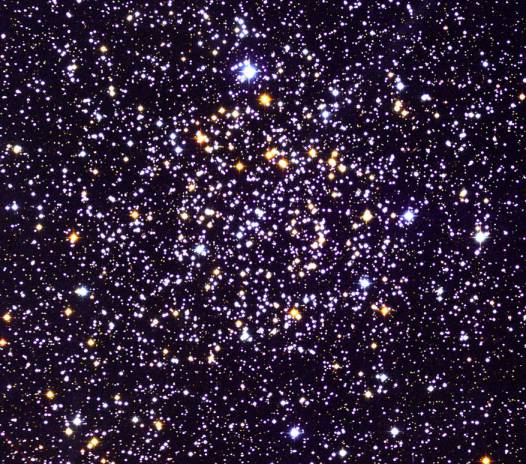
 Copyright © Michael Richmond.
This work is licensed under a Creative Commons License.
Copyright © Michael Richmond.
This work is licensed under a Creative Commons License.
Astronomers find a beautiful open cluster of stars in the midst of the Milky Way. It contains a mixture of hot, whitish stars and cooler, orange stars. One romantic scientist sees in it a treasure of diamonds and topazes, and gives it the name "The Gemstone Cluster."

Your job is to estimate the properties of this cluster using its HR diagram as a guide. Other astronomers have already measured the B and V magnitudes of stars in the area, all the way down to stars of magnitude 16.5 or so (about as faint as we can measure well with our telescopes here at RIT).
The datafile has one line per star, like this:
17.66 16.82 17.38 16.45 17.95 16.97The first column is the star's B-band magnitude, and the second column is the star's V-band magnitude. You can calculate the (B-V) color of each star from these numbers. By plotting the V-band magnitude on the vertical axis, and (B-V) color on the horizontal axis, you can make your own HR diagram.
http://www-laog.obs.ujf-grenoble.fr/activites/starevol/FILES/iso.html
to create models of an HR diagram for stars of metallicity z=0.03
and ages ranging from 50 million (5.0d7) to 5 billion (5.0d9) years.
For each age,
Or, if the Siess web site is down,
If you want to show your brilliance, use the difference between the observed (apparent) V-band magnitude of the turnoff point and the theoretical (absolute) V-band magnitude of the turnoff point to estimate the distance modulus and the distance to the cluster. You might find section 9.2 of your textbook useful. You might also read the manual to the CLEA Pleiades exercise.
 Copyright © Michael Richmond.
This work is licensed under a Creative Commons License.
Copyright © Michael Richmond.
This work is licensed under a Creative Commons License.